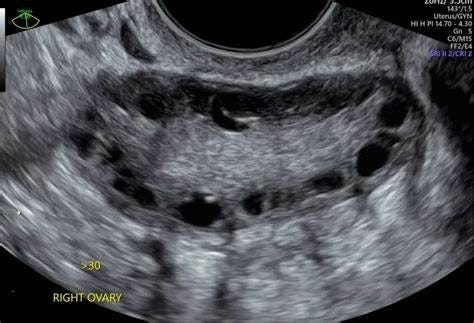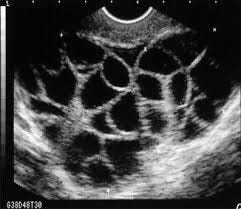Over the next few days, FERSOG will be discussing Ovarian Hyperstimulation Syndrome (OHSS) in various contexts. This topic is crucial to IVF services, as preventing OHSS is not just about avoiding complications — it’s about optimizing IVF success, ensuring patient safety, and enhancing overall well-being.
Introduction
Ovarian Hyperstimulation Syndrome (OHSS) is a potentially serious complication of controlled ovarian stimulation in assisted reproductive technology (ART). While advancements in IVF protocols have reduced its severity, OHSS remains a significant concern due to its potential for hospitalization, renal dysfunction, respiratory distress, and thromboembolic complications. This discussion highlights the importance of OHSS awareness, debating strategies, and patient education among IVF professionals. Addressing OHSS proactively enhances patient safety, improves treatment outcomes, reduces healthcare costs, ensures ethical compliance, and optimizes the overall IVF experience. Given that severe OHSS can be life-threatening, prevention remains the best approach.
mireproductivemedicine.com



1. Ensuring Patient Safety and Reducing Morbidity
Severe OHSS poses life-threatening risks, including:
Thromboembolism
Severe fluid imbalance (e.g., ascites, pleural effusion, hemoconcentration)
Renal dysfunction (including acute kidney injury)
Respiratory distress (e.g., pulmonary edema, pulmonary embolism)
Preventative strategies significantly reduce OHSS incidence. Early symptom recognition and patient education are key to preventing escalation. It is essential to identify which patients are most at risk and apply targeted interventions.
For more on patient risk factors, refer to: Cristiano E. Busso, Juan Antonio Garcia-Velasco, Carlos Simon, Antonio Pellicer, Prevention of OHSS: Current Strategies and New Insights, Middle East Fertility Society Journal, Volume 15, Issue 4, 2010, Pages 223-230. DOI:10.1016/j.mefs.2010.06.013
2. Enhancing Patient Awareness and Informed Decision-Making
Many IVF patients have limited knowledge of OHSS, leading to delayed symptom recognition and potentially increased complications. An open discussion about OHSS allows patients to:
Identify early warning signs (e.g., bloating, rapid weight gain, nausea, breathlessness, reduced urine output).
Understand their personal risk factors.
Make informed decisions regarding fresh vs. "freeze-all" cycles.
Educated patients are more likely to report symptoms early, allowing for timely medical intervention. Awareness also reduces patient anxiety, as understanding prevention strategies reassures them about their safety during IVF.
For patient information on OHSS, refer to: IVF Risks – NHS
3. Improving Patient Outcomes
OHSS can negatively impact pregnancy outcomes by increasing the risk of cycle cancellations and preterm birth. Severe OHSS can also:
Disrupt fertility clinic efficiency by causing cycle cancellations
Delay treatment, increasing emotional and financial burdens
Increase the risk of preterm delivery before 34 weeks of gestation
For more information on these adverse outcomes, see:
Ovarian Hyperstimulation Syndrome and Adverse Pregnancy Outcome – PubMed
The Association Between Ovarian Hyperstimulation Syndrome and Pregnancy Complications Following Fertility Treatments – PubMed
4. Reducing Healthcare Costs and Burden on Healthcare Systems
Cost is a major factor in patient access to IVF and IVF center sustainability. Hospitalization for severe OHSS is common, resulting in higher expenses and resource allocation. Implementing prevention measures can lower hospitalization rates and associated costs, as well as the costs of ICU interventions and thromboprophylaxis, along with the expenses of managing related complications. The management of each case of OHSS places additional pressure on fertility clinics, diverting resources away from routine fertility treatments. Consequently, preventing severe OHSS is crucial in minimizing the already substantial costs associated with high-risk IVF patients.
For further reading, see:
Adageba, Maya, Anan & Damalie, Setting Up and Running a Successful IVF Program in Africa: Prospects and Challenges.ResearchGate
5. Addressing Ethical and Legal Responsibilities in IVF Treatment
Ethically, IVF clinics are responsible for minimizing OHSS risk, ensuring informed consent and adhering to international best practices in reproductive medicine. This should include transparent discussions about risks and management of OHSS.
Failure to address OHSS adequately may lead to:
Inadequate informed consent (patients unaware of risks).
Medical negligence claims (e.g., claim on hospitalization due to severe OHSS).
Reputational damage (clinics perceived as unsafe).
The upcoming FERSOG discussions will help practitioners integrate proactive risk reduction strategies to protect both patients and providers.
6. Supporting Mental and Emotional Well-Being During IVF
IVF is an emotionally demanding process, and OHSS exacerbates anxiety and distress. Providing clear information and reassurance can help:
Reduce fear of cycle cancellation
Improve patient confidence in treatment
Encourage early symptom reporting
Structured psychological support improves patient experience and adherence to medical recommendations.
7. Encouraging Personalized and Evidence-Based IVF Treatment
Finally, discussing OHSS encourages practitioners to provide personalized care, recognizing that each patient's response to ovarian stimulation varies. Risk assessments using AMH, AFC, and estradiol levels help guide safer stimulation protocols, ensuring lower OHSS incidence. Practitioners are therefore trained to evaluate clients independently, rather than solely relying on their individual usual protocols or procedures.
For further reading:
The Prevention of Ovarian Hyperstimulation Syndrome (OHSS) in High Responders – ESHRE Guideline on Ovarian Stimulation for IVF/ICSI Oxford Academic https://doi.org/10.1093/hropen/hoaa009
Conclusion
Discussing OHSS is vital for improving patient safety, optimizing IVF outcomes, reducing healthcare costs, and upholding ethical standards. IVF professionals play a critical role in educating patients, implementing preventive strategies, and ensuring personalized treatment. Proactive OHSS prevention not only enhances clinical success but also fosters patient trust and well-being.
Discussion Recommendations for IVF Clinics:
What risk stratification protocols to use? [AMH and AFC levels]
What stimulation protocols to apply (e.g., GnRH antagonists, low-dose gonadotropins)
What’s the utility of elective embryo freezing in high-risk patients?
How to educate patients on early OHSS symptoms and encourage timely reporting
What outpatient monitoring programs for moderate OHSS cases do we develop?
Are we ethically compliant and transparent in patient counseling.
By prioritizing discussions on OHSS prevention, practitioners not only avoid complications but also optimize IVF success, patient safety, and overall well-being.
Additional Resources:
ESHRE Guideline: Ovarian Stimulation for IVF/ICSI – Oxford Academic
Providing Infertility Treatment in Resource-Poor Countries – Human Reproduction, Vol. 24, No. 5, pp. 1008–1011, 2009. DOI:10.1093/humrep/den503




